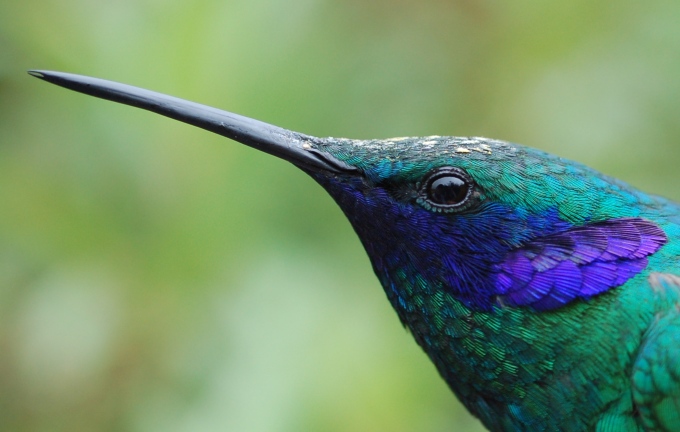When David beats Goliath
September 24, 2014
Share
Body size has long been recognized to play a key role in shaping species interactions, with larger species usually winning conflicts with their smaller counterparts. But Queen’s University biologist Paul Martin has found that occasionally, small species of birds can dominate larger species during aggressive interactions, particularly when they interact with distantly related species.
The new findings provide evidence that the evolution of certain traits can allow species to overcome the disadvantage of a smaller size.

“We want to understand why species live where they do, and how different species partition resources, like food, in nature,” Dr. Martin explains. “This research feeds into that. The 'larger animal wins' rule that usually governs species interactions, and often influences where smaller species can live, is more likely to break down when the interacting species are distantly related.”
For his research, Dr. Martin examined the outcome of 23,362 aggressive interactions among 246 bird species pairs including vultures at carcasses, hummingbirds at nectar sources and antbirds and woodcreepers at army ant swarms. The research looked at the outcome of aggressive contests for food among species as a function of their body size and evolutionary distance.
The research found that the advantages of large size declined with increased evolutionary distance between species — a pattern explained by the evolution of certain traits in smaller birds that enhanced their abilities in aggressive contests.
Specific traits that may provide advantages to small species in aggressive interactions included well-developed leg musculature and talons, enhanced flight acceleration and maneuverability and traits associated with aggression including testosterone and muscle development.
“This study examines broad patterns across many species, and now we would like to understand the details of these interactions by studying specific groups,” says Dr. Martin. “We really want to understand why some species can overcome the disadvantages of small size, while other species cannot.”
The research was done in collaboration with Cameron Ghalambor at Colorado State University in Fort Collins, who received a Good Family Visiting Faculty Research Fellowship to come to Queen's for the work.
The research was published in the latest issue of PLOS ONE.